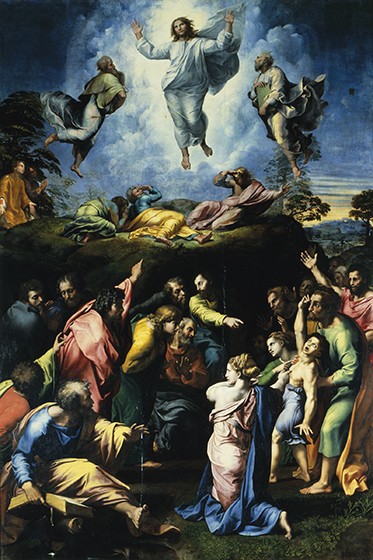The Transfiguration, by Raphael (Raffaello Sanzio) (1483–1520)

The transfigured Christ is miraculously lifted above Mount Tabor between Moses (on the right) and Elijah (on the left). James, Peter and John (from left to right) react to the blinding light and powerful drama occurring above them. Raphael is often called the great assimilator of the High Renaissance style, and the work exhibits the expected characteristics of balance, proportion and symmetry. The transfiguration appears in the upper half of the large altar painting (13'4" × 9'2") while the story of the possessed boy (which follows the story of the transfiguration in Matthew 17) inhabits the earthly realm. This is the last piece of art that Raphael worked on before his death on Good Friday, April 6, 1520, at age 37. It was brought from his studio in Rome and placed above his bier during the funeral in the Pantheon. The painting was originally commissioned by Cardinal Giulio de’ Medici for the Cathedral of Narbonne, France. He established a competition between Raphael and Sebastiano del Piombo, a Venetian artist, and Raphael may have included the rendering of the possessed boy to outdo Sebastiano.




